Reducing our plastic consumption is a hot topic on the news and social media at the moment. This is something I’ve been interested in for a long time and now, in the UK at least, it’s become a focus of general debate. Inspired by the focus on plastic, I decided to research the plastic components in yarn and identify the plastic-free alternatives.
What is plastic?
According to the Online Oxford Dictionary plastic is:
“A synthetic material made from a wide range of organic polymers such as polyethylene, PVC, nylon, etc., that can be moulded into shape while soft, and then set into a rigid or slightly elastic form. “
Plastic is an extremely versatile material. Plastics are all around us – in our homes, in our transport, in our clothes. If you want to find out more about plastic, The British Plastics Federation website has a lot of information and resources that promote the benefits of plastic. They believe that plastic is an important part of arresting climate change, claiming that “the plastics industry only consumes 4% of the world’s oil production as feedstock” and that “the production of most plastic products is not energy intensive compared to metals, glass and paper.”
So, on the one hand, plastic is a great invention that most of us rely on in many different ways. However, it also has its downsides.
What’s wrong with plastic?
- Plastic is manufactured from fossil fuels and is non-biodegradable. Its use, therefore, continues our reliance on fossil fuel which is not a sustainable resource. The fact that it doesn’t biodegrade is also a cause for concern and increasingly plastic is getting into our waterways and oceans and having an impact both on the wildlife and the food chain.
- Some of the additional chemicals used in the production of plastic products are believed to be linked to health problems (e.g. see Life Without Plastic for information on BPA and BPS in drink bottles).
- Microfibre pollution of the planet’s waterways and oceans is an increasing problem. A recent IUCN report has highlighted that up to 30% of the plastic pollution in oceans is as a result of microfibre pollution. When we wash synthetic fibres in both our home and industrial laundries, the report estimates that this could account for 35% of the microfibre pollution.
Reducing plastic
I certainly don’t live a plastic-free life but do try as much as possible to reduce the amount of plastic I use. I’ve rejected straws in drinks for many years, have invested in a soda stream to meet my fizzy water habit rather than buy plastic bottles and buy loose vegetables where possible.
In fact, I’ve become so keen on buying loose vegetables that I’ve planned a little bit of ‘craftivism’, inspired by Sarah Corbett, founder of the Craftivist Collective. To raise the issue of plastic packaging, particularly on the top-range of tomatoes, I’ve knitted a lovely package-free tomato as a gift for my local supermarket manager. I intend to give this to him with an accompanying letter encouraging him to influence the availability of more plastic-free tomatoes.
However, when it comes to knitting and crochet, the plastic issue isn’t always as obvious as it is with plastic bottles and food packaging.
Plastic yarn
I haven’t actually seen anyone advertising plastic yarn – it doesn’t sound very cosy or user-friendly, does it? However, much of the yarn available to us knitters and crocheters has a ‘plastic’ element.
I don’t want to get too technical here and I’m no scientist. However, acrylic, polyester and nylon (also known as polyamide) are all derived from synthetic polymers (plastics) and are commonly found in yarn.
For a detailed description of each, have a look at Natural Clothing’s informative website.
The other potentially ‘plastic’ component of yarn is ‘superwash’. Superwash wool is made either by immersing it in a chlorinated acid bath (the use and disposal of which has environmental implications) or it is coated with a polyamide. Sometimes it undergoes both these processes. The obvious benefit of ‘superwash’ is ease of care, and ability to machine wash without shrinkage or felting. However, the downside of the ‘plastic’ superwash is the same as for all the plastic components of fibre (e.g fossil fuel derived, microfibre pollution etc.)
Apart from the price point and the washability of synthetic fibres, they also have other positive qualities. For example, acrylic yarn is lightweight, soft and warm, is resilient, takes colour well and is colourfast. Nylon is more often than not a key component of sock yarn as it provides durability. I’ve had many conversations with people who argue that without any nylon content those beautiful socks that you’ve spent hours knitting and successfully heel turning will have holes in them within months.
What are the alternatives to plastic yarn?
As with every purchasing decision, we need to think about what’s most important to us. Is it better to avoid plastic-based components or make items that we can put in the washing machine? Also, let’s not get carried away with the scale of what we’re talking about – even if I spent the rest of my life knitting socks with a nylon element this would be a small contribution to my ‘plastic footprint’ compared to the plastic that I make use of daily. However, I am intrigued by the alternatives available.
For me, using plastic-free yarn is relatively easy. I tend to knit accessories for myself or friends, I don’t knit larger garments and I don’t knit for children. So, having to hand-washing items isn’t a big issue for me. What has intrigued me though is the nylon-free sock debate. Is it possible to find sock yarn that is durable and nylon-free?
Nylon-free sock yarn
In my research, I came across a great blog by Winwick Mum who’s taken this issue seriously. I highly recommend that you read her blog and analysis of the different socks that she’s put to the test. Two of the yarns that she features are by Blacker Yarns – Tamar Lustre Blend 4 Ply and Hebridean Wool with Mohair. As Blacker Yarns say on their sock yarn description,
“Mohair is often referred to as nature’s nylon, so this yarn is particularly well suited to making socks”.
Another great-looking sock yarn is Whistlebare’s Cuthbert Sock Yarn which is 80% mohair and 20% Wensleydale.
As they say on their website:
“Mohair is the perfect fibre for socks. It has the highest rub test of any natural fibre so you don’t need nylon. Nothing is better for keeping cold feet warm and hot feet cool than natural fibres. Mohair and Wensleydale are very lustrous and smooth, meaning bacteria can’t get hold and so there is no smell! All round the perfect blend for active feet.”
I’ve also come across some other suppliers of nylon-free sock yarn:
- Town End Yarns – 45% Peruvian alpaca, 35% organically farmed Falklands Merino and 20% Mulberry silk.
- In The Wool Shed – 4 ply, lace weight – 100% British Wool Blueface Leicester
Good news – superwash alternative
There is also good news on the ‘superwash’ front– Schoeller spinning have invented an alternative called EXP – which doesn’t use chlorine and coats the fibre in ecological polymers. I’m not entirely sure what an ecological polymer is but it is approved by bluesign® and Global Organic Textile (G.O.T.S) standards, and it also conforms with the Okeo-Tex standard.
EXP is available in some yarn by the two Schoeller brands – Schoeller & Stahl and Austermann. Whilst the Austermann Merino is 100% wool, the sock yarn does still have nylon content.
I’ve also come across O Wool which is a US yarn company that supplies organic, washable wool. As their website says:
“O-Wash uses a GOTS certified organic compound to create machine-washability. The compound holds the fibers still during washing so the scales cannot interlock and felt. Conventional ‘superwash’ processes burn the scales off the fiber with an acid bath, or coat the fiber in a resin, or both. O-Wash both has its scales and uses a certified organic compound!”
Check the label
I was amazed at the amount of synthetic fibre in my yarn stash. Even the luxury brands that I’ve knitted with have their fair share of plastic.
If you’re intrigued to know more about the yarn that you’re knitting or crocheting with then please check the label. If you come across any great examples of ‘plastic-free’ yarn, particularly in relation to their washability and durability then please add a comment and let me know.
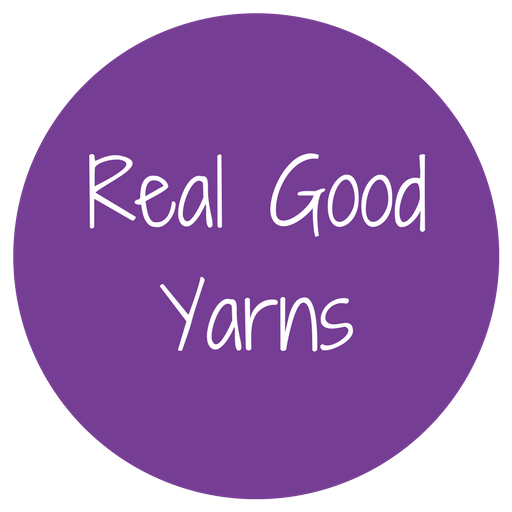
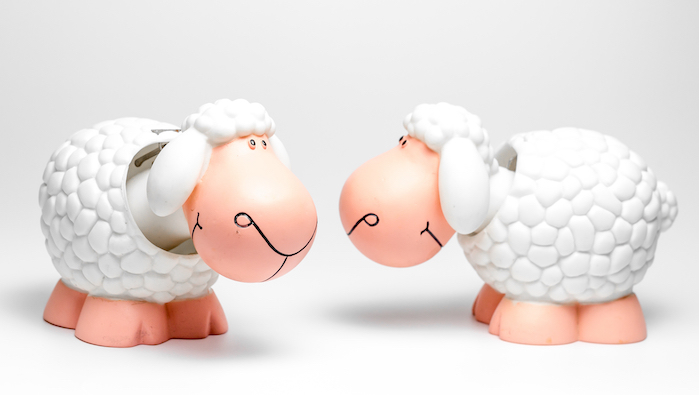
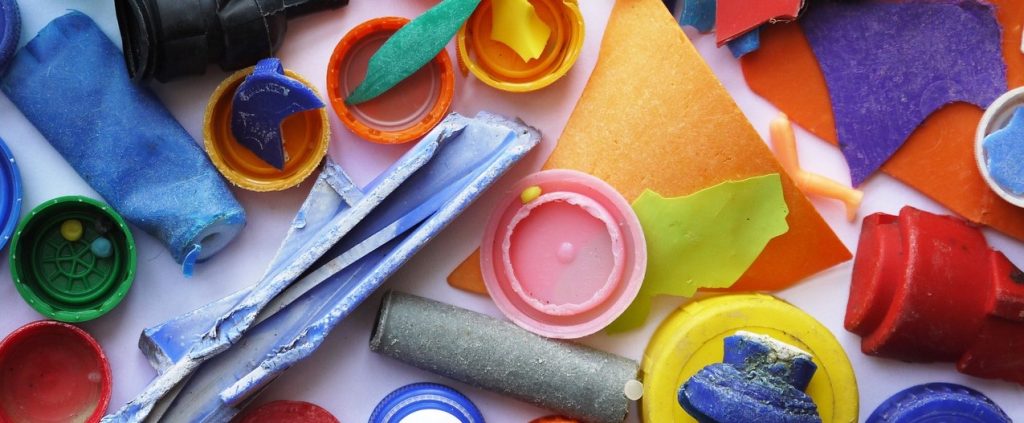
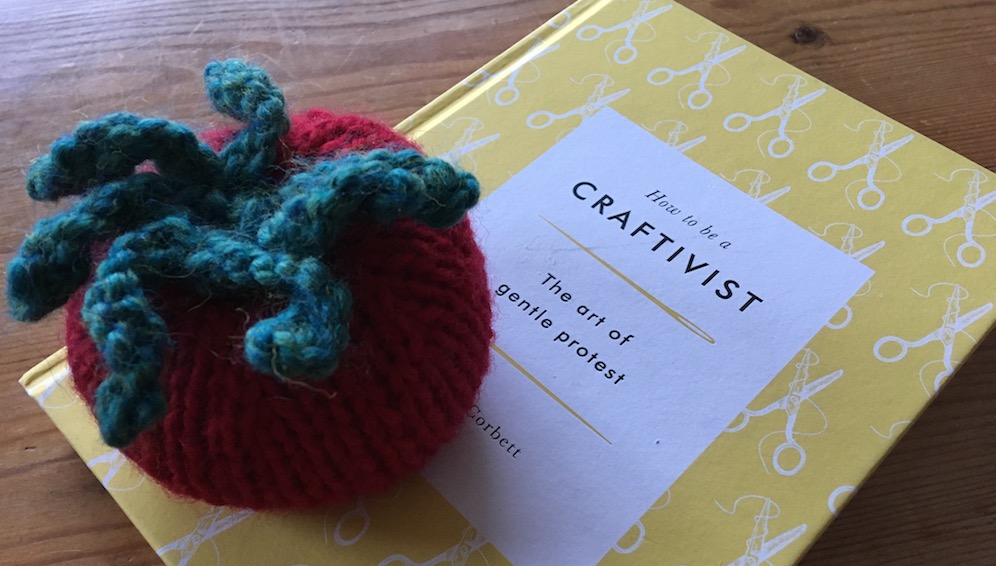
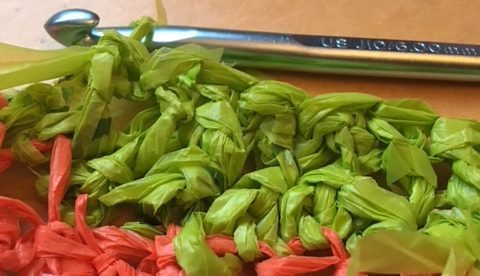
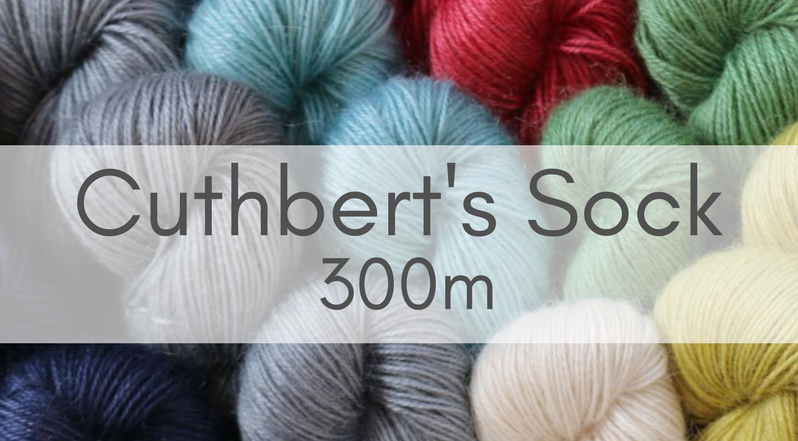
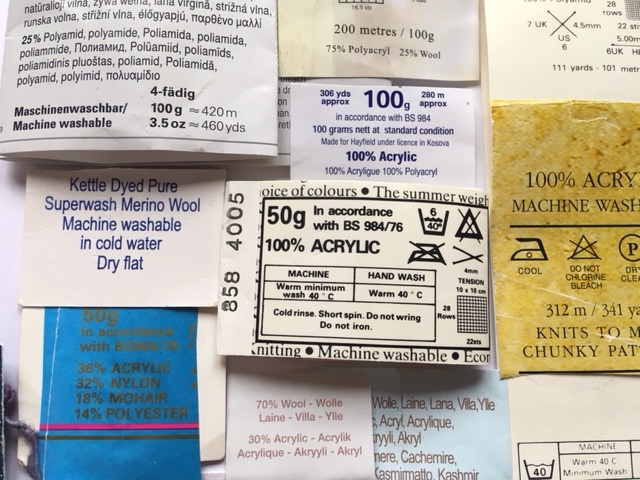
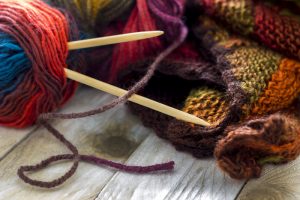
http://Www.ardalanish.com use and supply British Native Breed yarns , grown and spun in the U.K.
Thank you for this recommendation. I’ll get in touch with them to see about listing them in the directory.
Like you, I hoped that Blackeryarns Hebridean wool with mohair would be the answer to avoiding nylon but it turned out not to be so – within three washes there was a large hole on the heel of one sock and significant thinning on the other. I’ve made socks using the same pattern with Regia wool/nylon yarn on numerous occasions and not had the same problem. Blackeryarns themselves admitted when I contacted them that the yarn was not turning out to be as abrasion-resistant as they had hoped. Shame, because it’s absolutely beautiful to knit with.
Hi Helen – thank you for your comment. It’s good to hear people’s experience of knitting with the different yarns and a shame that the Hebridean wool didn’t work as hoped. I know of people saying that they’ve knitted the heel differently to allow for extra resilience, however, it’s all personal choice on how much more work to do. It’s good to hear that it’s beautiful to knit with though – maybe for some other garment?
I’ve read that Blue-faced Leicester is strong enough for socks without nylon, but don’t have any experience of it myself as yet.
Hi there – I’m also going to try knitting some socks with BFL. I guess they might need a bit of reinforcement at the heels and toes. Winwick Mum has a tutorial on this – https://www.winwickmum.co.uk/2016/09/reinforcing-heels-and-soles-free.html
This article was really interesting. I am using more non plastic yarn when possible. My biggest difficulty is that I make a lot of blankets, shawls and scarves which use a large amount. Acrylic is by far the most cost effective option and I’m struggling to find a suitable alternative.
I understand the cost issues, Morwenna – it’s tricky isn’t it.
It certainly is. U can easily find alternatives when making hats etc but really need an alternative to good old basic acrylic DK yarn
I remember, years ago, knitting socks and the yarn came with a reel of cotton thread- was wondering if that would work with a pure wool or wool blend. Maybe we should all look at darning – a thing in some European countries OR working heels so they can be unpicked and reknitted… Makes you think! x
Thank you Pat – you can still buy darning wool, however, I’ve only found a wool/nylon blend. I like your idea about unpicking heels – might be beyond my knitting capability though 🙂
The Knitting Goddess has a nylon-free sock yarn. I have a skein, but haven’t knitted it up yet.
I keep Angora goats and have some 100% mohair yarn that Blacker Yarns produced for me. It is costly to produce but I would be happy to come to an arrangement if someone wanted to try it to see if it produces decent socks
Its a shame you didn’t look into bamboo yarns as this material is fast growing and eco friendly. I would have liked to hear about how well it wears.
Hi Barbara, thank you for your comment. I write about bamboo in the Vegan Yarn blog – https://realgoodyarns.co.uk/vegan-yarn/vegan-yarn/. I’ve not used it myself so couldn’t answer your question about how well it wears. However, some of the manufacturing is quite controversial.
Two options I have come across are Pinta by Pascuali – I got some from Ewe and Ply, and Garthenor’s Snowdonia sock yarn. I have only tried out Pinta so far but it seems prtty good – it is made of wool, ramie (nettle) and silk and lovely to knit with.
Surely a big manufacturer such as Zwergergarn (Opal) or Schechenmayr (Regia) with all the expertise of the German textile industry could come up with either a tight-twist 100% wool sock yarn or a nifty strengthener that is biodegradable. I’m really surprised that they haven’t at least trialled it already, now in 2021, given that Germany pioneered a lot of recycling technologies.
Socks that Rock is promoted as having a tight twist, but it’s not available in Australia so I haven’t tried it. And there were some sock yarns with nettle a while ago, but I don’t think it worked out.
A shame that Blacker Yarns couldn’t get its mohair blend to work. You have to wonder if it there was inadequate product testing, but then I suppose maybe the mill didn’t work to the agreed specification.
Thanks for the article!